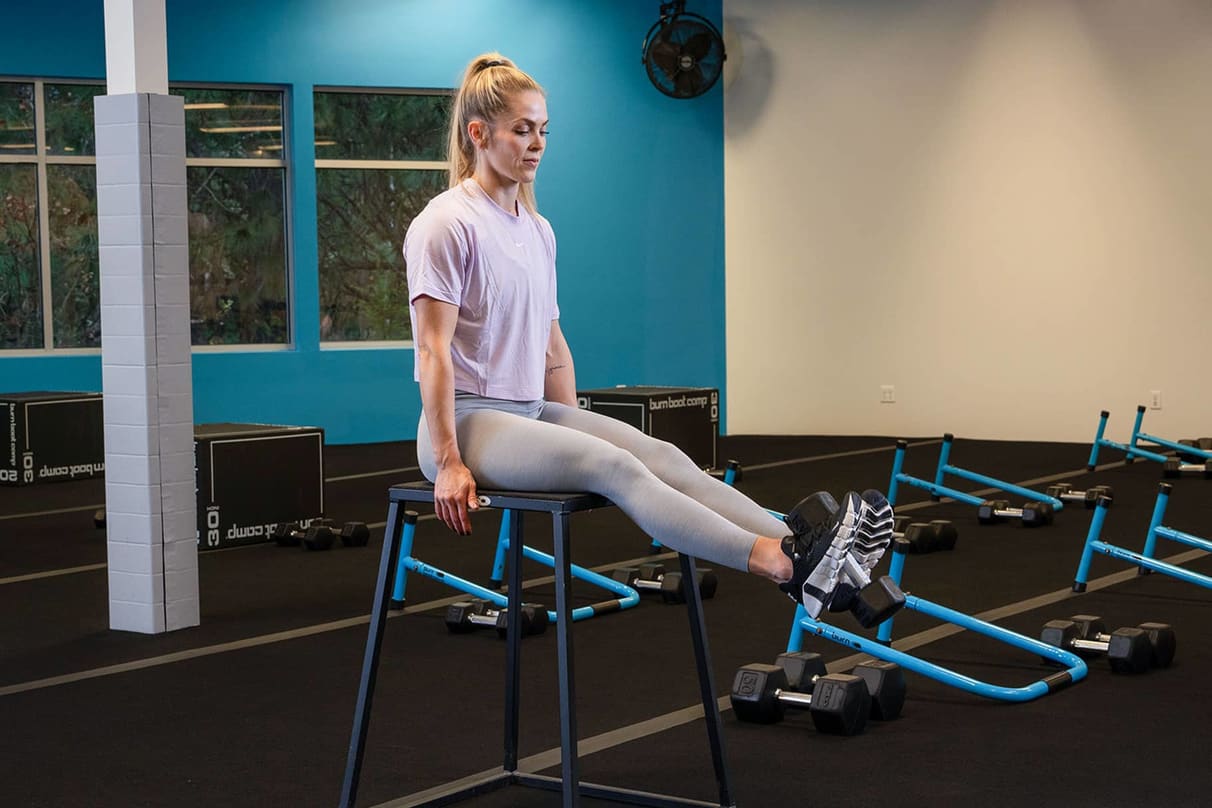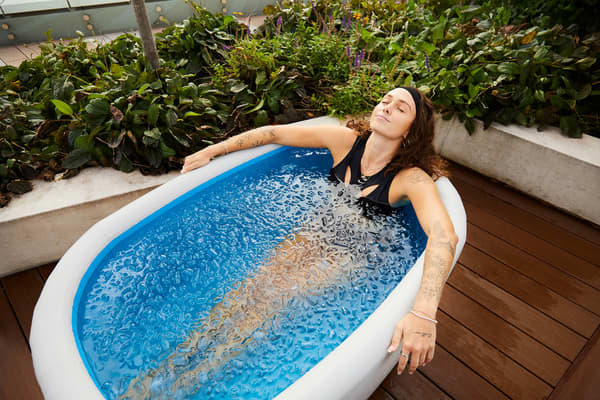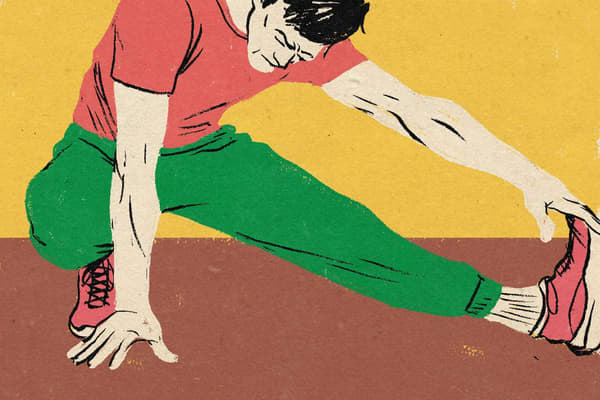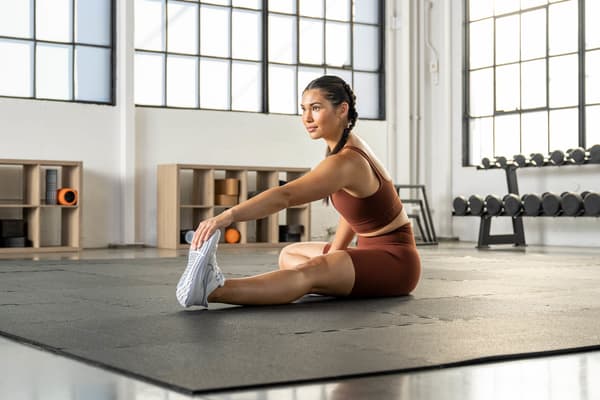4 Exercises for Knee Pain, According to Doctors
Sports & Activity
Experts share key reasons behind knee pain and offer a handful of exercises that can help alleviate discomfort.

Your knees have an all-important job of keeping you mobile, while allowing you to sit and stand at a moment’s notice. However, if you often experience discomfort in this complex joint, know that there are several exercises for knee pain that can help you feel better.
“Knee pain is one of the most common joint issues in the entire body,” said Michael Gerhardt, M.D., sports medicine specialist, and orthopedic surgeon at Cedars-Sinai Kerlan-Jobe Institute. It can start suddenly after an injury or engaging in a particular exercise. Alternatively, it can come on slowly and get worse over time.
If you’re dealing with knee pain, it’s understandable to want to make it go away as quickly as possible. Doctors say that it’s important to get a proper diagnosis and treatment plan to help you get better fast. Be aware that they may prescribe doing exercises for knee pain. These, they say, can be helpful in getting you back into tip-top shape, depending on the diagnosis. Here’s what you need to know, plus exercises to help grant relief.
Common Causes of Knee Pain
There are a lot of reasons why you may experience pain in your knees. The U.S. National Library of Medicine has a laundry list of potential causes, the most common of which include:
- Arthritis
- Bursitis (inflammation from repeated pressure on the knee)
- Torn ligament
- Torn cartilage
- Strain or sprain
Gerhaedt added that knee pain “can just come from normal everyday life events, such as climbing stairs or walking long distances for work or exercise.”
When To See a Doctor for Knee Pain
While knee pain is common, it’s not normal. “If your knee pain does not improve with rest, acetaminophen or NSAIDs, ice or heat over the span of a week or two, I would recommend evaluation by a physician to determine the cause,” said Matthew Axtman, D.O., a sports medicine physician at Corewell Health West, in Grand Rapids, Mich. “Early diagnosis means you can be treated sooner and, in most cases, return to activities in short order.”
He recommended seeing a doctor sooner if you have significant swelling, instability (feeling like your knee is going to give out), or locking of the knee, “as these may be indications of more serious problems.”
Exercises for Knee Pain: How They Can Help
Doing specific exercises can be helpful for alleviating knee pain and preventing it from coming back, said Nicholas Anastasio, M.D., a board-certified physician at Orthopedics and Joint Replacement at Mercy Medical Center in Baltimore, Md.
“Exercises that strengthen the muscles that surround the knee joint can help take stress off the knee joint and improve certain conditions that cause knee pain,” he said. “In general, maintaining the strength of the muscles that cross the knee joint, such as the quadriceps, hamstrings, and calf muscles, are the ones to focus on.”
Exercising to alleviate knee pain can help prevent injuries and reduce pain as you get older, Axtman said.
“The knee joint is a simple hinge that does not have a significant amount of rotation,” he said. “It is important to have good muscle structure surrounding it to prevent abnormal stresses that can cause pain or injury.”
That, Axtman added, is why he tells patients that “motion is the lotion” for joints. “It is important to keep the knee joint mobile, stable, and strong,” he added.
(Related: The Top Exercises and Stretches for Hip Mobility, According to Physical Therapists)
Exercises for Knee Pain
All of these experts said there are several exercises and stretches that can help with knee pain. However, keep in mind that it’s always a good idea to be seen by a professional before introducing any new exercises.
1.Leg Extensions

You can do these extensions either at a weight machine designed for leg extensions or with ankle weights or a dumbbell while sitting in a chair or on a weight bench. (You can also do these without weights to start, if you have none at home.) To do the extensions with ankle weights, first strap the weights around your ankles and then sit so that your knees are bent at a 90-degree angle with your feet on the floor. Slowly straighten one knee and try to lift it until your leg is straight (if possible). Then, slowly return it to the ground. Switch legs. Try to do about 15 reps on each leg, with a goal of two to three sets.
Anastasio recommended focusing on the last 10 to 20 degrees of the knee extension as this can strengthen the vastus medialis oblique muscle (the inner part of your quads that helps you extend your knee) and stabilize your knee cap (also called the patella), adding overall strength and stability to your knees.
2.Leg Curls

Consider these the opposite of leg extensions. Typically, these are done on a weight machine designed for leg curls, although you can try to do them with ankle weights or resistance bands. To do them with ankle weights, stand with your feet hip-width apart with weights on each ankle. Then, bend your knee on one side and slowly lift your heel toward your glutes, pause at the top, and lower it back down. “These strengthen the hamstrings and can support the posterior knee,” Anastasio said. Again, aim for about 15 reps, with two to three sets.
3.Calf Raises

Calf raises “help support the posterior knee,” or the muscles in the back of your knee, Anastasio said. To do calf raises, stand up straight with your feet next to each other. Then, raise yourself up by putting weight on the balls of your feet. You can make it more difficult by doing one leg at a time.
Aim for 15 reps on each leg.
4.Quadricep Stretches

Your quadriceps or “quads” are a group of muscles at the front of your thigh that help support your knees, among other things. To do quad stretches, stand next to a wall with your feet hip-width apart. Bend your knee so that your heel is toward your butt and gently pull the heel back and up until you feel a stretch in the front of your thigh. Use your opposite hand to balance against the wall if you need extra support or want to deepen your stretch. Hold this position for about 10 seconds before switching legs.
“These can help with flexibility” of the muscles around the knee to help lower the risk of injury in the future, Anastasio said.
Words by Korin Miller





